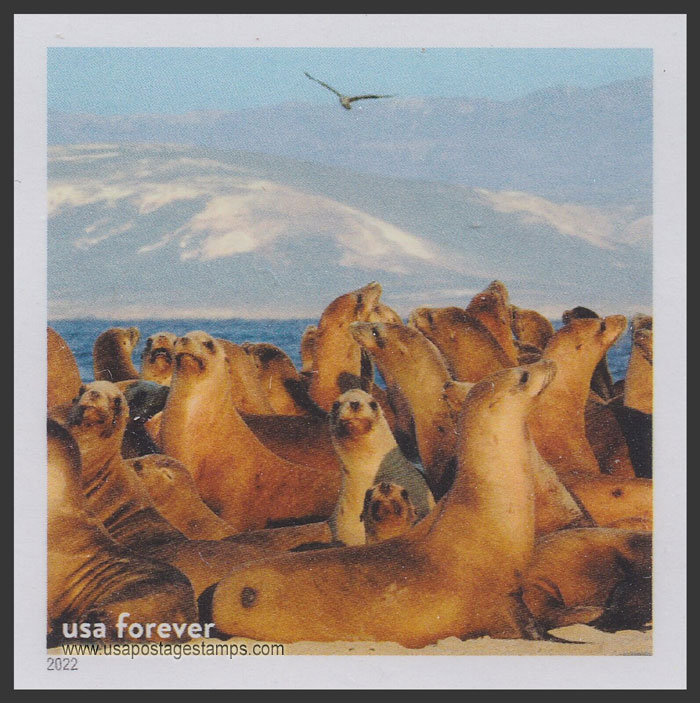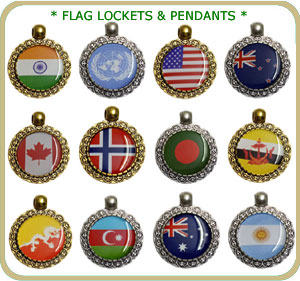US 2022 Sea Lions, Channel Islands National Marine Sanctuary, Imperf. 60c. Scott. 5713qm

Series: Marine Sanctuaries of the USA (2022)
Stamp details: Sea Lions, Channel Islands National Marine Sanctuary
Issued date: 05-08-2022 (dd/mm/yyyy)
Face value: 60c.
(FOREVER º - No Face Value)
Format: Pane of 16
Emission: Commemorative
First Day City: Santa Cruz, California
Catalogue No:-
Scott (USA): 5713qm ?
Dimensions (height x width):
39.75mm x 39.75mm
Printer: Ashton Potter (USA) Ltd
Print Method: Offset
Designers: Greg Breeding
Perforation: Imperforate
Stamp Colors: Multicolored
Gum type: Self-Adhesive
Themes: National Park, Sea Lion, Animal, Marine Life, Sea Life
Note: Stamp from imperf. Mini-Sheet.
Face value US$0.60 each stamp on day of issue.
Stamp details: Sea Lions, Channel Islands National Marine Sanctuary
Issued date: 05-08-2022 (dd/mm/yyyy)
Face value: 60c.
(FOREVER º - No Face Value)
Format: Pane of 16
Emission: Commemorative
First Day City: Santa Cruz, California
Catalogue No:-
Scott (USA): 5713qm ?
Dimensions (height x width):
39.75mm x 39.75mm
Printer: Ashton Potter (USA) Ltd
Print Method: Offset
Designers: Greg Breeding
Perforation: Imperforate
Stamp Colors: Multicolored
Gum type: Self-Adhesive
Themes: National Park, Sea Lion, Animal, Marine Life, Sea Life
Note: Stamp from imperf. Mini-Sheet.
Face value US$0.60 each stamp on day of issue.
Description:- Sea lions are pinnipeds characterized by external ear flaps, long foreflippers, the ability to walk on all fours, short and thick hair, and a big chest and belly. Together with the fur seals, they make up the family Otariidae, eared seals. The sea lions have six extant and one extinct species (the Japanese sea lion) in five genera. Their range extends from the subarctic to tropical waters of the global ocean in both the Northern and Southern Hemispheres, with the notable exception of the northern Atlantic Ocean. They have an average lifespan of 20–30 years. A male California sea lion weighs on average about 300 kg (660 lb) and is about 2.4 m (8 ft) long, while the female sea lion weighs 100 kg (220 lb) and is 1.8 m (6 ft) long. The largest sea lions are Steller's sea lions, which can weigh 1,000 kg (2,200 lb) and grow to a length of 3.0 m (10 ft). Sea lions consume large quantities of food at a time and are known to eat about 5–8% of their body weight (about 6.8–15.9 kg (15–35 lb)) at a single feeding. Sea lions can move around 16 knots (30 km/h; 18 mph) in water and at their fastest they can reach a speed of about 30 knots (56 km/h; 35 mph). Three species, the Australian sea lion, the Galápagos sea lion and the New Zealand sea lion, are listed as endangered.
Source: en.wikipedia.org/wiki/Sea_lion
cultural, archeological, scientific, educational, or aesthetic qualities. While National Marine Sanctuaries are multiple-use areas, the NMSA emphasizes that one of the express purposes of a sanctuary is to “maintain the natural biological communities” and to “protect and, where appropriate, restore and enhance natural habitats, populations, and ecological processes.” The National Marine Sanctuary System consists of 15 marine protected areas that encompass more than 783,000 square miles (2,030,000 km2). Individual areas range from less than 1 to 583,000 square miles (3 to 1,509,963 km2).
Source: en.wikipedNational_Marine_Sanctuary
Source: en.wikipedia.org/wiki/Sea_lion
cultural, archeological, scientific, educational, or aesthetic qualities. While National Marine Sanctuaries are multiple-use areas, the NMSA emphasizes that one of the express purposes of a sanctuary is to “maintain the natural biological communities” and to “protect and, where appropriate, restore and enhance natural habitats, populations, and ecological processes.” The National Marine Sanctuary System consists of 15 marine protected areas that encompass more than 783,000 square miles (2,030,000 km2). Individual areas range from less than 1 to 583,000 square miles (3 to 1,509,963 km2).
Source: en.wikipedNational_Marine_Sanctuary




